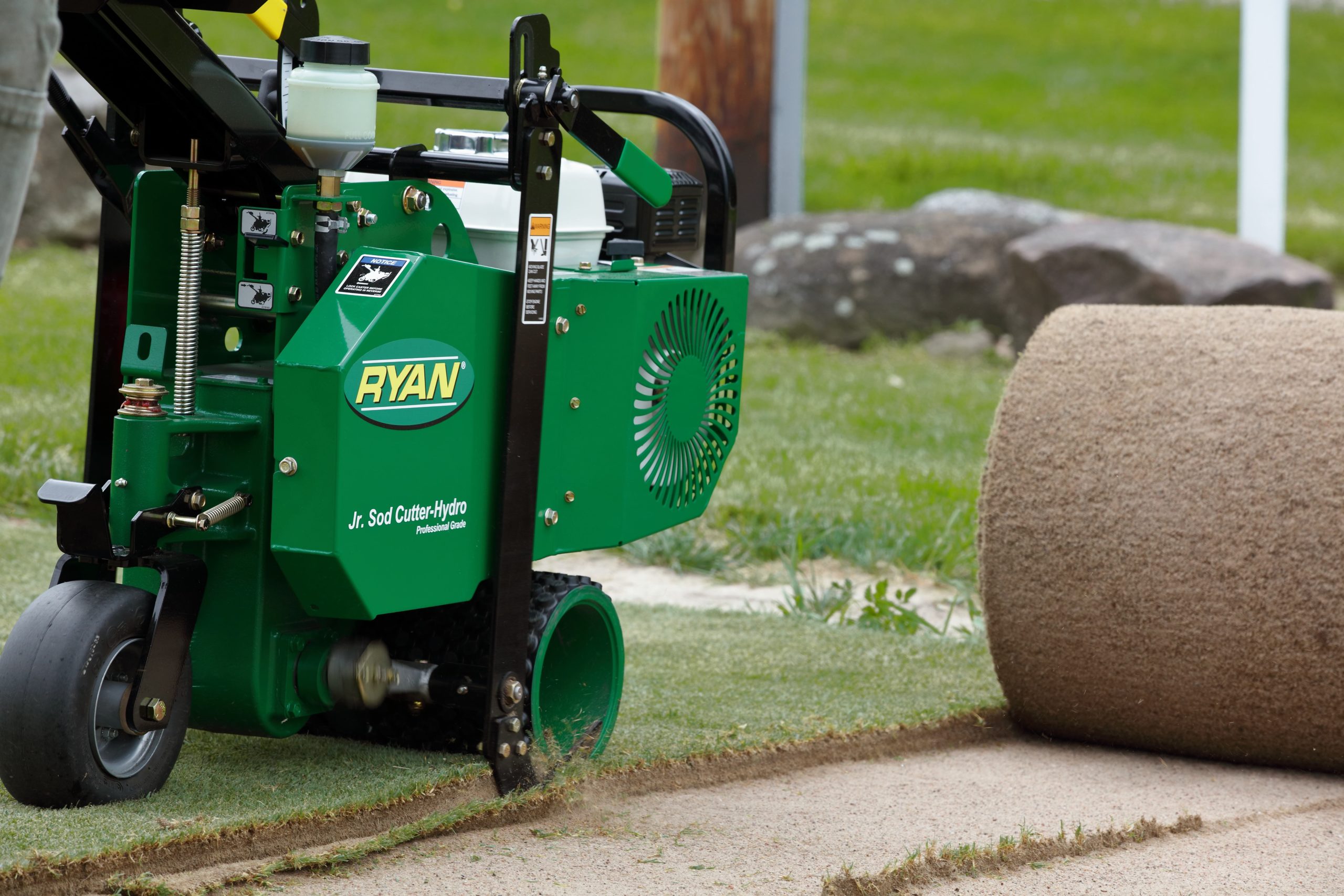
Many people spend their winters imagining what projects and updates they’ll make to their turf, whether it’s a golf course superintendent, a homeowner or a landscaper. And summertime is the big leagues, when that work gets done, but these renovation projects can happen all year long. In many of these projects, whether for the pro or the homeowner, cutting sod is a crucial step.
Do you have a lawn project that requires sod cutting? Turf Connections can reserve use of our Ryan brand sod cutter for FREE, (subject to availability) when you purchase sod from one of our four farms in the Carolinas.
We provide the following tips to our customers to help with your next sod cutting project.
Ron Scheffler, senior product manager for RYAN®—which produces the industry staple Jr. Sod Cutter as well as the new Jr. Sod Cutter – Hydro—has some key tips to consider when sod cutting is a part of your turf renovation project.
It sounds obvious, but sod cutters work most efficiently when you know where you’re cutting sod, how much sod you’re cutting, and where it’s going to go. Sod cutters come in different widths (often 18” and 24”) to give you options. 24” models are more productive in cutting more sod, but if you’re cutting sod for an irrigation line or dog fencing, it might be best to use a narrower width. In any case, make sure to measure out and mark where you’re going to cut so you have a plan to follow.
You may know your sod cutter inside and out because you’ve been using it for years, but if you have a new machine or are renting one, you should familiarize yourself with it to make sure you’re using all the tools to your advantage. Be sure to check your owner’s manual to properly operate your sod cutter. For example, The RYAN® Jr. Sod Cutter and Jr. Sod Cutter – Hydro feature Easy Steer Technology that allows the rear caster wheel to lock in place for straight lines, but it can also unlock for easy turning and maneuvering.
Not all soil is created equal, so you will likely have to tweak your approach depending on the moisture level and the type of grass. After you begin cutting, stop after a few feet into the cut to make sure that you’re comfortable with the depth of the cut. The more moisture, the easier it will be to begin cutting.
Keeping in line with your plan you set in place before you get started, make sure to cut your sod in manageable pieces. Not only will this help you in rolling and transporting it, but it will help you stay focused on the cut that you’re working on. Also, be mindful of your own energy level. Sod cutting can be strenuous, but newer RYAN® sod cutters have Ultra Low Vibration Technology that takes much less of a toll on your hands and arms.
To stay organized and efficient, you should carefully roll up your sod after each pass so you know where you’ve already cut. This will help to show your progress and show you where you need to cut next.
As with many things, you’ll find that once you get started and get in a rhythm, you’ll find that what you thought was a daunting task is actually very manageable. You can make things run even more smoothly if you have the right tools and the right plan to get the job done.
If you have more questions about sod cutting or your turf renovation needs, contact RYAN® at https://www.ryanturf.com/contact-ryan/ or visit a RYAN® dealer.
To reserve use of the Turf Connections’ Ryan sod cutter, when you purchase your sod from one of our four farm locations in the Carolinas, call 843-862-8873.
Copyright 2025 Turf Connections | Privacy Policy